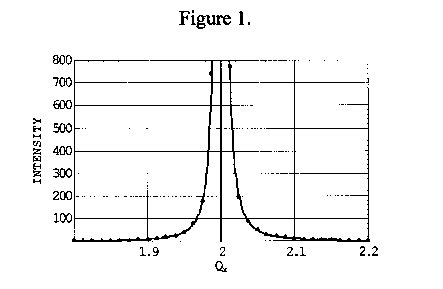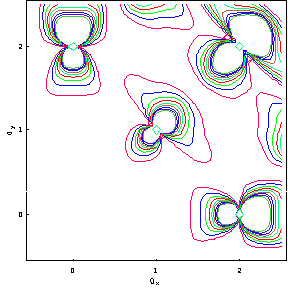
THE COMPARISON OF LATTICE AND CONTINUUM THEORIES OF HUANG SCATTERING
R.I Barabash1, J.S. Chung2 and M.F. Thorpe3
1 National Technical
University of Ukraine, pr. Pobedy 37, Kiev 56, Ukraine
2 Department of Physics,
Chungbuk National University, Gaeshin-dong,
Cheongju-shi,Chungbuk,360-763,Seoul, Korea
3 Physics & Astronomy
Department, Michigan State University, East Lansing,
Michigan 48824-1116, USA
Keywords: X-ray scattering, Neutron
scattering, Solid solutions, Huang scattering
The predicted X-ray and neutron scattering by random semiconductor alloys with the zincblende structure, has been analyzed using direct simulation of the scattering from the atoms in the lattice, and also using continuum theory. The former was based on a numerical procedure [1] which adjusted the positions of all atoms and the size of the cubic super-cell with to minimize the energy for an A1-xBxC alloy. The size-mismatch was described with a Kirkwood potential. The scattering intensity was computed from the relaxed coordinates.

Figure 1.
Our initial work has focused on the special case of the single impurity limit (small x) where the elastic properties of both the pure A and B crystals are isotropic. The influence of different scattering amplitudes on the intensity was analyzed. The continuum theory of diffuse scattering from isolated defects [2-4] predicts the appearance of strong Huang scattering around all reciprocal lattice points having the shape of double-drop. Direct simulation over the lattice was made for several reflections in the (001) plane at the closely spaced super-lattice points. Different super-cell sizes are used for direct simulations over the lattice to evaluate its influence on the accuracy of the calculation of displacement field and diffuse scattering intensity and in order to obtain a denser mesh of points for the calculation of the diffuse scattering.
In the Figure 1, we show the results of the direct lattice simulations (dots) and the continuum result (solid line) for the (200) reflection along the direction [100] for a random A1-xBxC alloy, which show remarkably good agreement with each other. The number of atoms for the lattice simulations is N = 8 x 403 = 512,000.
Huang scattering is expected to be dominated by long wavelengths near the peaks in the scattering, so that continuum theory should provide a good description of the scattered intensity. It is a bit of a surprise that continuum theory also does rather well in the wings, where shorter wavelengths are important. We have verified that the displacement field falls off as an inverse square law at large distances from a single defect as predicted by continuum theory, but that there significant deviations close to the defect.
To analyze the shape of isodiffuse surface, a contour map (see Figure 2) for lines of equal intensity was calculated for the (001) plane, again for isotropic elastic constants, using the relaxed atomic positions. The double drop shapes around the (200), (020), (110) and (220) reciprocal lattice points, are aligned so that the axes point towards the origin.

Figure 2